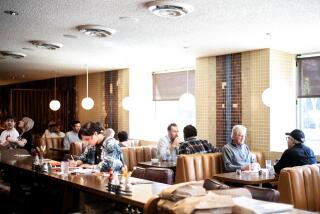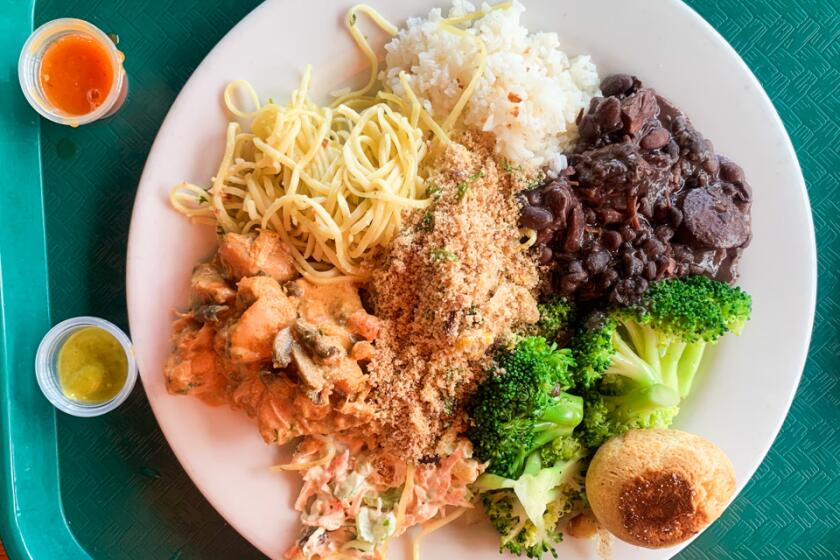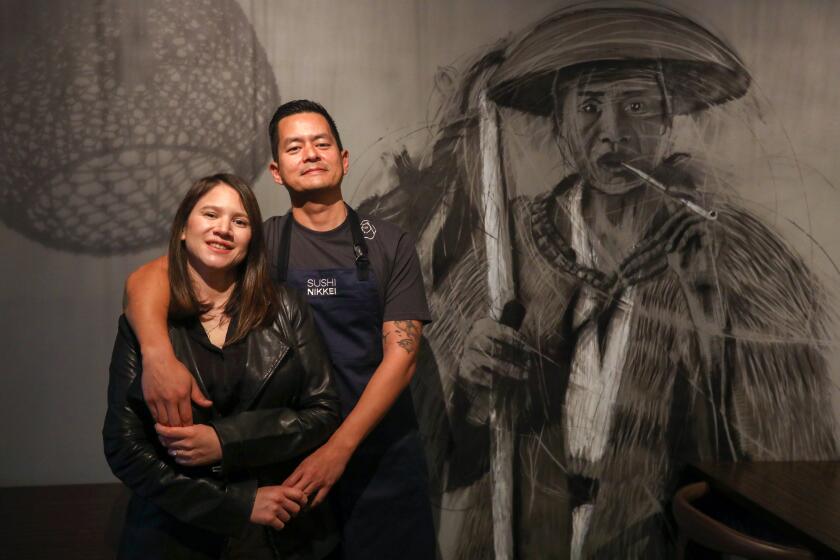The New Liquid Gold: Truffle Oil
When most people think of Italy, it’s warm temperatures and sunny skies they dream about. For me, it’s cold and fog. Warmth and sun we can get here. White truffles, we cannot.
November and December in the Piedmont area north of Turin is truffle time. The air is crisp and cold enough you can see your breath. Evenings and mornings the surrounding hills are blanketed with a thick, damp fog (nebbia in Italian, the root for the name of the local wine grape, nebbiolo, from whence come Barolo and Barbaresco).
It’s cold enough that shop doors are shut tight against the weather. This is important, because one of the signal pleasures of truffle time in Alba--the Piedmont’s main town--is walking down the narrow main street and realizing that you can tell four or five stores away who is selling white truffles. The smell is so pungent that every time a door swings open the immediate neighborhood is perfumed. Never has window shopping been such a gastronomic experience.
When you tell tales like that in this country, people scoff. It’s hard to blame them. I’ve eaten truffles here too, truffles that were imported by excellent restaurateurs--and those that were brought in buried in the depths of somebody’s luggage. (Incidentally, should you try the latter approach, stick the truffle in a tightly sealed glass jar filled with rice. Do not, repeat, do not, wrap it in your underclothes.)
So, because I’ve had experience with white truffles at home and abroad, you’ll have to take it on faith when I tell you that I have never had a white truffle here that was anything more than a shadow of a truffle on its home turf.
The smell of a white truffle is difficult to describe without sounding overwrought. It’s frequently described as “earthy,” and that is certainly at least metaphorically correct, because truffles are like (oversimplifying greatly) buried mushrooms. And, certainly, a white truffle has the deep, dark pungency of a great wild mushroom.
But to me, the smell is more of animal than of earth. It’s almost a musk smell. It’s been described as resembling sweat, and I suppose that is true--but only in the most erotic way. It’s like trying to explain the difference between game and domestic meat.
My first experience with truffles in the Piedmont was at Belvedere, which, as the name implies, is pretty much a view restaurant except that, because it’s in Italy, the panorama of the surrounding countryside comes with a full and competently executed menu of local specialties.
There they serve truffles in one of the great traditional regional dishes, risotto con fonduta e tartuffi bianchi--a fairly neutral risotto laced with a thick ribbon of hot melted cheese. At serving, the maitre d’ (a waiter would never be trusted with this) shaves at least a quarter-inch of truffles over the entire plate. It is a dish to wake the dead.
Another time at another restaurant, I had almost finished my meal when an overpowering aroma of truffles wafted my way. Almost 20 feet away, the owner was scraping one onto a warm plate of white Gorgonzola for our cheese course.
Most truffles I’ve had in this country had to be held up almost to one’s nose to detect any aroma at all. So you can imagine how happy I was when I opened my first bottle of truffle oil. It’s made from steeping truffle shavings in olive oil, and a good brand delivers true white truffle aroma at a fraction of the cost.
I bought my first bottle several years ago at the Annual Truffle Market in Alba and didn’t try it until I got home. I promptly wrote to the manufacturer, asking, in my fractured Italian, if he would ship to the United States. At least that’s what I think I asked. Regardless, I never heard from him.
So I forgot about that and concentrated on begging friends who were traveling to Northern Italy to carry bottles home for me. This kept me in Christmas presents for a couple of years.
But now truffle oil has become quite a hot property, and you can find it at many gourmet food and wine stores. It’s important that you get a good brand: As with anything else that suddenly becomes popular, there is a wide range in quality. See if you can’t cadge a sample sniff before you buy. A bad oil will smell rancid--a friend describes the odor as “hair tonic.”
For the most part, truffle oil should be used on warm dishes and only at the last minute. Try making a simple risotto with Parmesan cheese and stirring a teaspoon or two of oil into every serving. Or try beating some oil into mayonnaise and using that on a salad of boiled potatoes (no pickles, please).
The other day, faced with friends coming over at the last minute, I threw together a paste of things I had on hand in my pantry to use as a crostini topping--some canned beans, some walnuts, a little butter--and then added a thread of truffle oil just before spreading it on warm toast rounds.
Fat is kept to a minimum by basing the paste on pureed white beans--one of the few benefits gained from a recent reading of “Graham Kerr’s Best.” Add only enough butter to round out the flavor; it’s amazing how a tablespoon or two changes the balance of power from white bean to walnut.
I’ve served this three times since. It is certain to become one of my staple winter finger foods. Serve it with various kinds of olives and a cheese or two and you’ve got a very nice antipasto or cocktail assortment.
The thing I like best about this recipe is the way the three kinds of earthy flavors combine. That and, of course, the heady aroma of the white truffles.
WHITE TRUFFLE CROSTINI
1 (18-inch) baguette
3/4 cup canned white beans, drained
1/2 cup walnut halves
2 tablespoons butter
Salt
2 tablespoons white truffle oil
Slice baguette into 1/2-inch slices and toast under broiler until golden brown, about 7 to 10 minutes.
Puree white beans, walnuts and butter in food processor. Taste and add salt as needed (some beans are saltier than others).
Just before serving, with machine running, add truffle oil in thin stream. Spread dollops of puree on each piece of toast and serve immediately.
Makes 36 crostini.
Each crostini contains about:
57 calories; 63 mg sodium; 1 mg cholesterol; 3 grams fat; 6 grams carbohydrates; 1 grams protein; 0.33 gram fiber.
* Striped plate from Barneys New York in Beverly Hills.
More to Read
Eat your way across L.A.
Get our weekly Tasting Notes newsletter for reviews, news and more.
You may occasionally receive promotional content from the Los Angeles Times.







